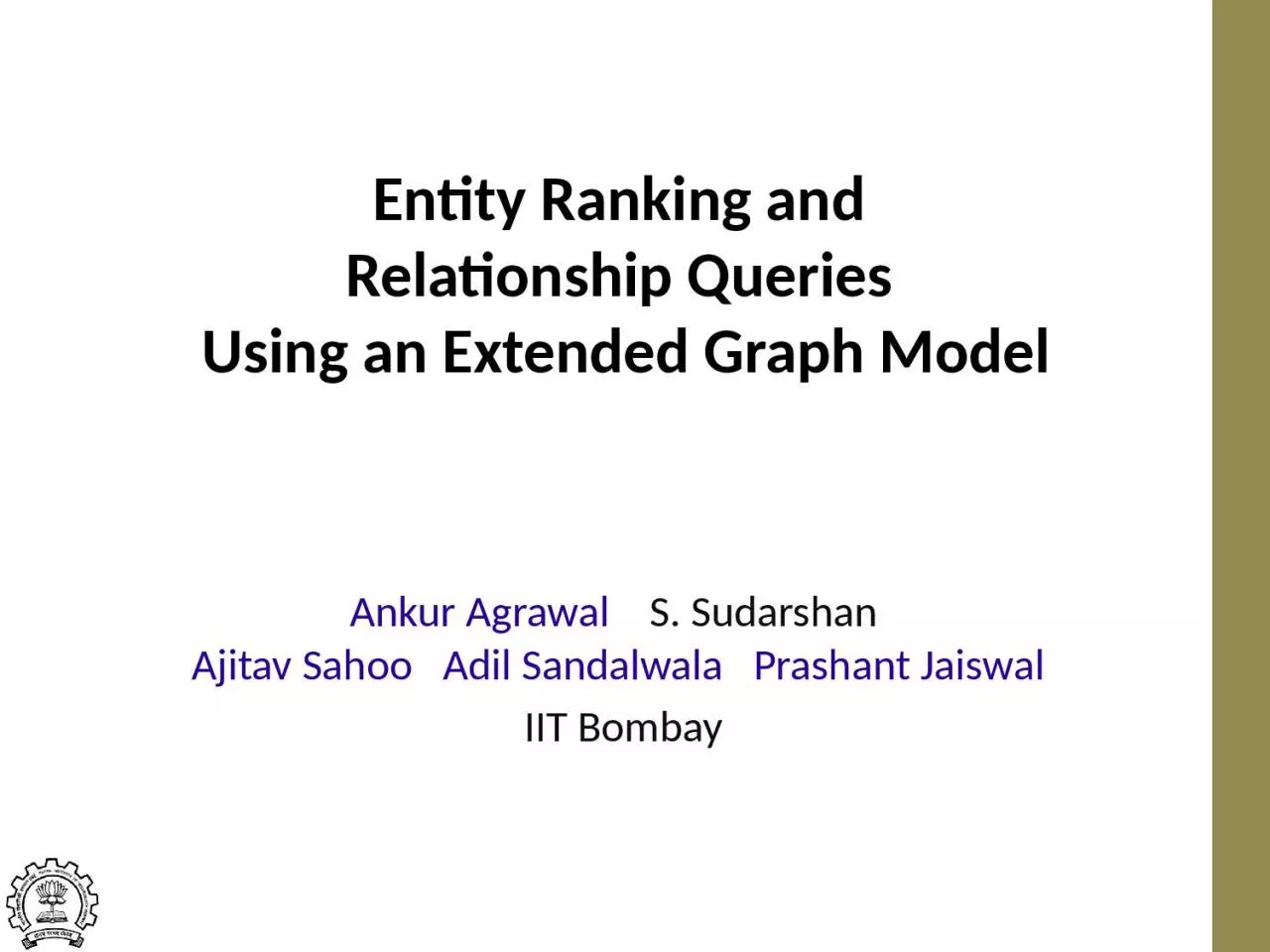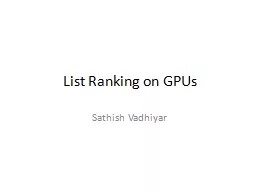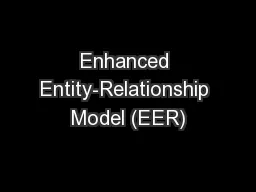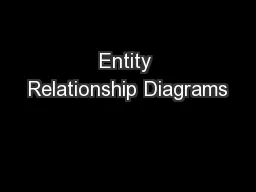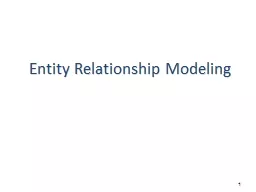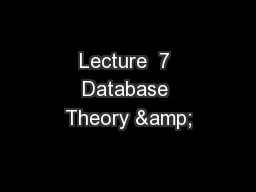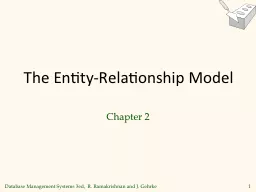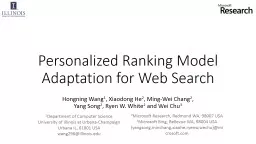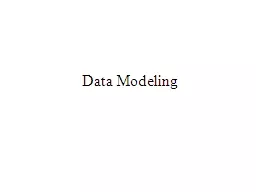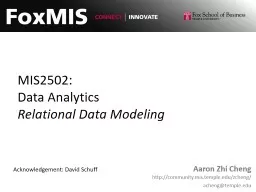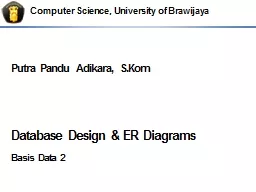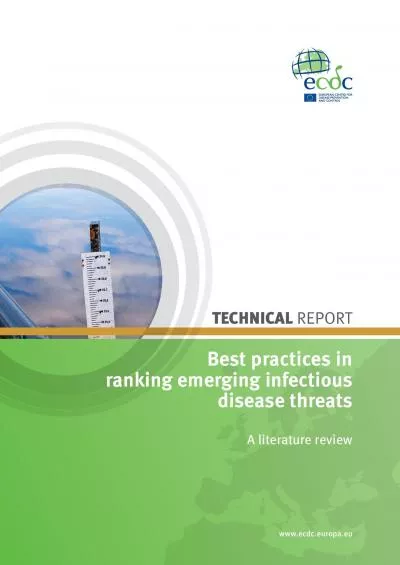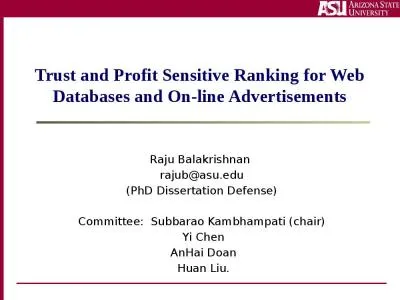PPT-Entity Ranking and Relationship
Author : bella | Published Date : 2023-12-30
Queries Using an Extended Graph Model Ankur Agrawal S Sudarshan Ajitav Sahoo Adil Sandalwala Prashant Jaiswal IIT Bombay History of Keyword Queries
Presentation Embed Code
Download Presentation
Download Presentation The PPT/PDF document "Entity Ranking and Relationship" is the property of its rightful owner. Permission is granted to download and print the materials on this website for personal, non-commercial use only, and to display it on your personal computer provided you do not modify the materials and that you retain all copyright notices contained in the materials. By downloading content from our website, you accept the terms of this agreement.
Entity Ranking and Relationship: Transcript
Download Rules Of Document
"Entity Ranking and Relationship"The content belongs to its owner. You may download and print it for personal use, without modification, and keep all copyright notices. By downloading, you agree to these terms.
Related Documents

